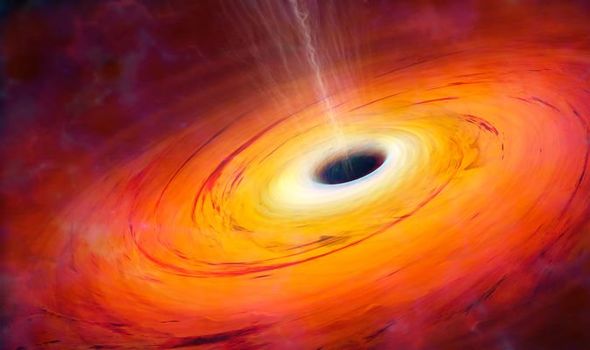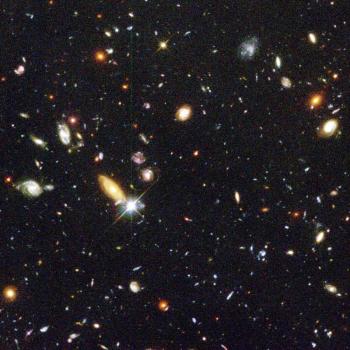 The longer I live the more amazed I get about how great Almighty God is. It’s because of what scientists are discovering about our universe and how it works. I believe the God of the Bible is the one who created it. The psalmist King David was right–“The heavens declare the glory of God” (Psalm 19.1 NIV).
The longer I live the more amazed I get about how great Almighty God is. It’s because of what scientists are discovering about our universe and how it works. I believe the God of the Bible is the one who created it. The psalmist King David was right–“The heavens declare the glory of God” (Psalm 19.1 NIV).
This is a historic day in astronomy. A team of more than 200 scientists revealed a colorful image of a black hole–well sort of. Two years ago, they took pictures simultaneously with six radio-wave telescopes stationed around the world aimed at the same black hole. These telescopes were located on mountains in Hawaii (Manea Kea on the Big Island), Arizona, Mexico, Chile, Spain, and Antarctica at the South Pole. It is called the Event Horizon Telescope project (EHT). The effect of these telescopes working in tandem was that it was like one big telescope the size of the earth. That was the only way these scientists thought they might be able to see a black hole.
Until then, scientists had thought it would be impossible for humans to ever view a black hole from earth. But today, this project sort of trashed that viewpoint. These pictures were sent to scientists at Massachusetts Institute of Technology (MIT). It took them two years to organize this complex data into a single, visible image (see above).
Every galaxy in the universe has at least one, super-massive black hole in its center. Black holes are disks that spin very fast and have an opening. Black holes have an enormous gravity that causes their opening to gobble up planets, suns, gas, dust, and whatever. Once this matter gets close to the opening of a black hole, called its Event Horizon, its gravity causes that matter to descend into the black hole. Even light cannot escape from the black hole, which is why it called a black hole. Theoretically, all of this matter in the black hole gets squeezed together into an extremely dense singularity.
Black holes and dark matter have been perhaps the most mysterious things in the universe for scientists to understand. Black holes were first discovered in 1781 by astronomer Charles Messier. But scientists were not sure if Messier was right about it. In 1915, Albert Einstein published his general theory of relativity. His calculations indicated that Messier was right, that the universe has black holes. Yet, even Einstein was skeptical about this and therefore wondered if he was wrong in his formulations.
So, what black hole did they take pictures of? It was not the black hole at the center of our Milky Way galaxy, which scientists call Sagittarius A*. They estimate it is the size of four of our suns. Instead, the EHT team of scientists aimed those telescopes at Messier 78 (M78), obviously named after Charles Messier. This M78 black hole is 55 million light years away from earth. One team member says this M78 black hole is 2,000 times bigger than Sagittarius A* and 2,000 times farther from earth than Sagittarius A* is.
Two years ago, the EHT team also took pictures of Sagittarius A* for comparison with M78; but its data is more complex than that of M78. The team expects to publish an image of Sagittarius A* soon. In actuality, the M78 image does not show the black hole; rather, it shows its opening as being totally black with light surrounding the black hole and spinning with it.
These scientists published six papers about EHT today in the Astrophysical Journal Letters.












